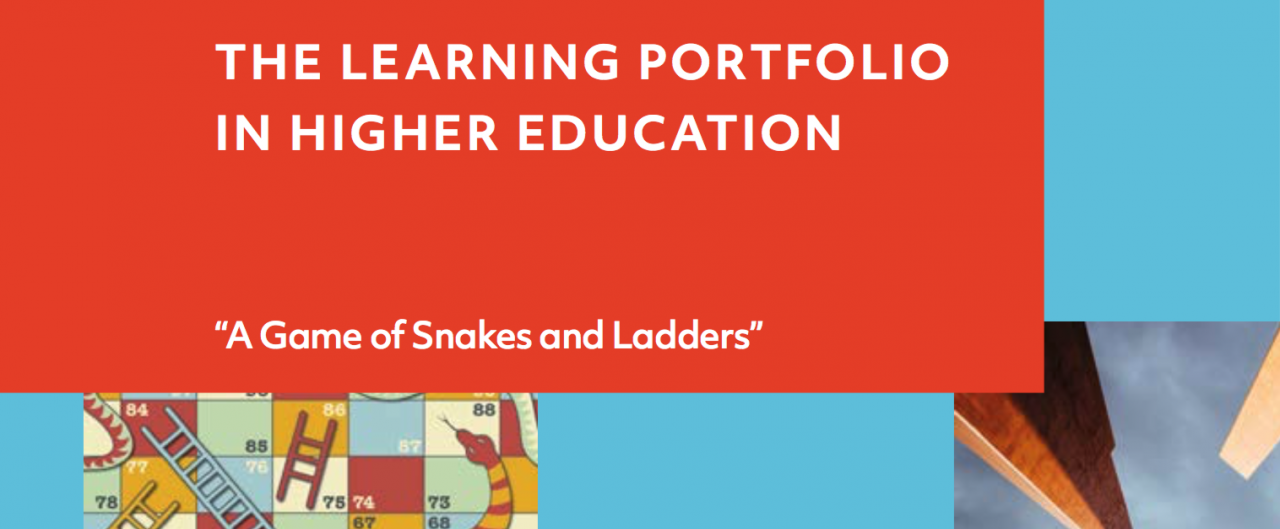The Learning Portfolio in higher Education
Last week the DCU's National Institute for Digital Learning (NIDL) and the Centre for Assessment Research, Policy and Practice (CARPE) published an interesting report on portfolio use in higher education. The report synthesizes and reviews the literature on the use of the 'learning portfolio' in universities and higher education institutions.
Traditionally the (paer-based) portfolio was associated with the fine arts/design as a means for individuals to showcase samples of their work. Nowadays the portfolio is used as a pedagogical and assessment tool in all different kind of disciplines and in all levels of education. The definition the authors mention is a good reflection of this:
‘a portfolio is an organized compilation that demonstrates knowledge, skills, values and/or achievements and that includes reflections or exegesis which articulate the relevance, credibility and meaning of the artefacts presented.’
In the report they distinguise three types of portfolios:
- showcase portfolio: this most closely resemble the original paper-based portfolio
- summative/evalution portfolio: students receive a grade based on the work submitted in their portfolio.
- Learning Portfolio: Unlike showcase and assessment portfolios, learning portfolios may include drafts and ‘unpolished’ work, with the focus broadened to include the process of compiling the portfolio, as well as the finished product.
The report focuses on the learning portfolio.
Theory
According to the authors the 'learning portfolios are intended to support, measure and document critically self-reflective lifelong learning, and they are perceived to be a valuable pedagogical tool for higher education institutions seeking to broaden learning experiences, such that their graduates may ultimately embody a range of “21st century skills” and competencies.'
A bold conclusion of their literature review is that although the theory is promising, the absence of sufficient empirical support. They state that implementation of university-wide, portfolio-based programmes may still be premature.
Successful outcomes depend on effective implementation
A couple of interesting statements they make in the report:
- ePortfolio use has the potential to yield positive outcomes, but the extent to which this occurs is heavily dependent on the nature of the implementation
- when course designers and teachers evidenced a deep appreciation of the processes that a learning portfolio is intended to support, learners perceived a more authentic learning experience
- the tension between the evaluative and developmental aspects of portfolio use continues to present significant challenges
- Too often, technology becomes the scapegoat for failed initiatives that are in fact due to more conceptual shortcomings in the way the learning portfolios have been understood and implemented.
- universities and higher education institutions usually view portfolios as fulfilling multiple purposes simultaneously
- when learners conceptualize their portfolio in terms of both process and product, this leads to the most favourable outcomes
- the processes involved in the construction of learning portfolios need to be fully understood by all stakeholders to ensure their benefits are realized; simultaneously, the product conceptualization needs to be managed to ensure this does not suppress the potential of the learning portfolio to support intrinsic motivation to learn.
Recommendation
The success of the portfolio is depending on the implementation:
It is clear from the extant literature that the successful and sustainable implementation of learning portfolios in a higher education institution requires considerable planning and preparation, and a substantial commitment from staff (both academic and technical) and students (learners).
The authors give a four recommendation to avoid the potential 'snakes':
- Formal pedagogical and technical professional development in portfolio processes should precede any attempts at implementation
- The tool should be named and conceptualized with its primary goal in mind
- Learners should “own” their portfolios
- Technological platforms should seamlessly facilitate, rather than interrupt the process of portfolio construction
I fully support the authors that there is a clear need for further research on the use of learning portfolios in higher education contexts.
Reference
- Scully, D., O’Leary, M. & Brown, M. (2018). The Learning Portfolio in Higher Education: A Game of Snakes and Ladders. Dublin: Dublin City University, Centre for Assessment Research, Policy & Practice in Education (CARPE) and National Institute for Digital Learning (NIDL). ISBN: 978-1-873769-78-2
1 comment
Comment from: K E Karunakaran [Visitor]
Form is loading...
